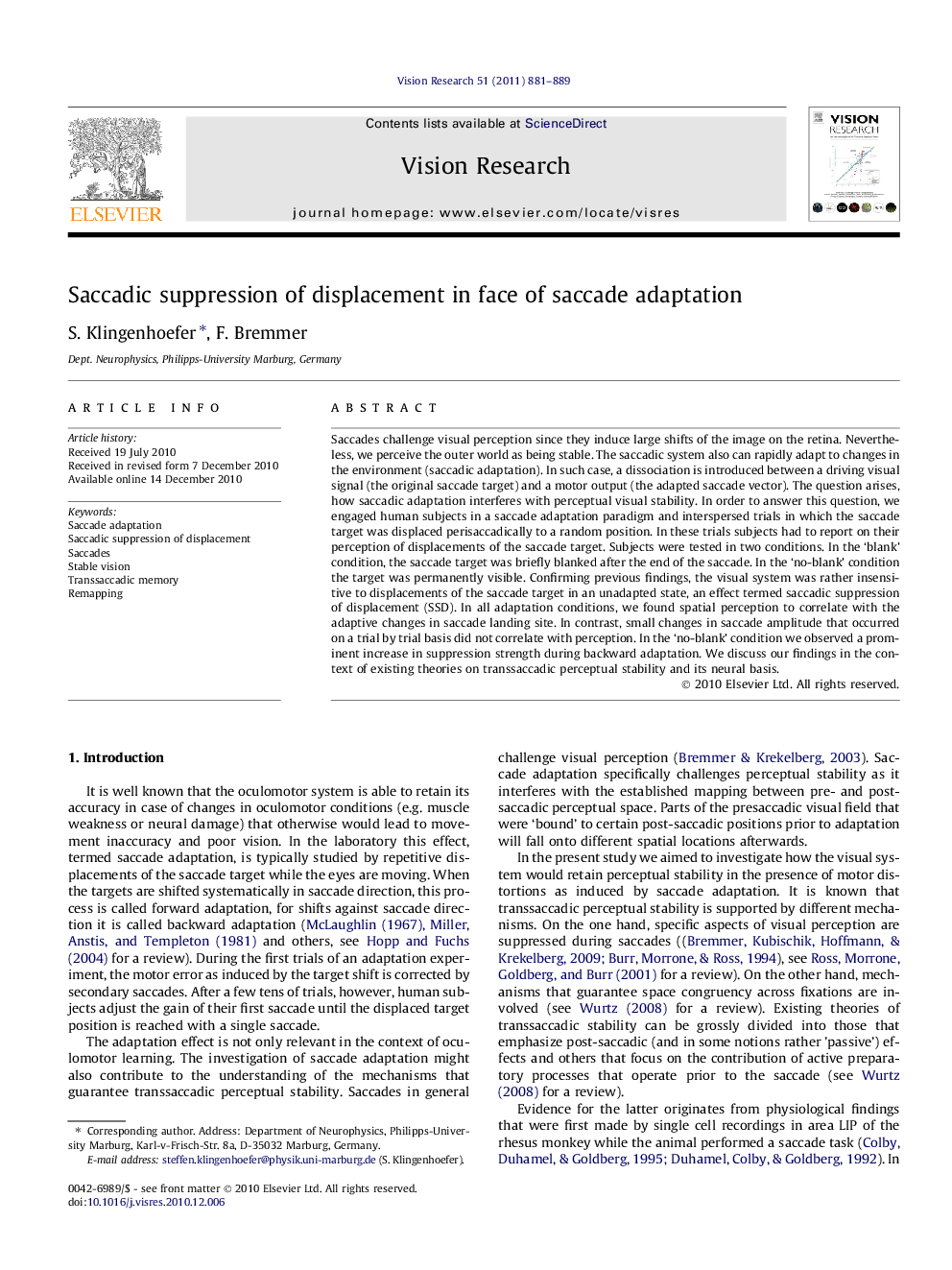| Article ID | Journal | Published Year | Pages | File Type |
|---|---|---|---|---|
| 4034369 | Vision Research | 2011 | 9 Pages |
Saccades challenge visual perception since they induce large shifts of the image on the retina. Nevertheless, we perceive the outer world as being stable. The saccadic system also can rapidly adapt to changes in the environment (saccadic adaptation). In such case, a dissociation is introduced between a driving visual signal (the original saccade target) and a motor output (the adapted saccade vector). The question arises, how saccadic adaptation interferes with perceptual visual stability. In order to answer this question, we engaged human subjects in a saccade adaptation paradigm and interspersed trials in which the saccade target was displaced perisaccadically to a random position. In these trials subjects had to report on their perception of displacements of the saccade target. Subjects were tested in two conditions. In the ‘blank’ condition, the saccade target was briefly blanked after the end of the saccade. In the ‘no-blank’ condition the target was permanently visible. Confirming previous findings, the visual system was rather insensitive to displacements of the saccade target in an unadapted state, an effect termed saccadic suppression of displacement (SSD). In all adaptation conditions, we found spatial perception to correlate with the adaptive changes in saccade landing site. In contrast, small changes in saccade amplitude that occurred on a trial by trial basis did not correlate with perception. In the ‘no-blank’ condition we observed a prominent increase in suppression strength during backward adaptation. We discuss our findings in the context of existing theories on transsaccadic perceptual stability and its neural basis.
Research highlights► Spatial perception in perisaccadic displacement discrimination and detection tasks correlates with adaptive changes in saccade landing site induced by saccade adaptation, in both, ’blank’ and ’no-blank’ paradigms. ► Small changes in saccade amplitude that occur on a trial by trial basis do not correlate with perception. ► The strength of saccadic suppression of displacement increases during backward saccade adaptation, if the saccade target is not blanked.
